
Prague Castle is a castle complex in Prague 1 within Prague, Czech Republic, built in the 9th century. It is the official office of the President of the Czech Republic. The castle was a seat of power for kings of Bohemia, Holy Roman emperors, and presidents of Czechoslovakia. The Bohemian Crown Jewels are kept within a hidden room inside it.

František Chvalkovský was a Czech diplomat and the fourth foreign minister of Czechoslovakia.

The Embassy of the United States of America in Prague is the diplomatic mission of the United States of America in the Czech Republic. The chancery is located on Vlašská street in Malá Strana, Prague, where it occupies the historic Schönborn Palace and possesses an extensive garden.

The Embassy of Germany in Prague is located on Vlašská street, in the Malá Strana district of Prague, Czech Republic.
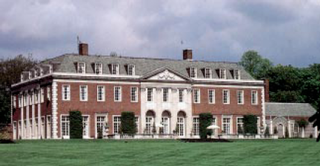
The Secretary of State's Register of Culturally Significant Property is an honorific listing of diplomatic properties that figure prominently in the international or architectural heritage of the United States. It was founded in 2000 as a White House Millennium Project, in equation of the National Register of Historic Places for domestic properties maintained by the Secretary of the Interior. These historic places include chanceries, residences, office buildings, a museum, a cemetery, and a guest house; the properties are either owned or leased by the U.S. Department of State at the time of designation.

The expulsion of Germans from Czechoslovakia after World War II was part of a series of evacuations and deportations of Germans from Central and Eastern Europe during and after World War II.

On 20–21 August 1968, the Czechoslovak Socialist Republic was jointly invaded by four Warsaw Pact countries: the Soviet Union, the Polish People's Republic, the People's Republic of Bulgaria and the Hungarian People's Republic. The invasion stopped Alexander Dubček's Prague Spring liberalisation reforms and strengthened the authoritarian wing of the Communist Party of Czechoslovakia (KSČ).

The Petschek Palace is a neoclassicist building in Prague. It was built between 1923 and 1929 by the architect Max Spielmann upon a request from the merchant banker Julius Petschek and was originally called "The Bank House Petschek and Co." Despite its historicizing look, the building was then a very modern one, being constructed of reinforced concrete and fully air-conditioned. It also had tube post, phone switch-board, printing office, a paternoster lift, and massive safes in the sublevel floor. The building was sold by the Petschek family before the occupation of Czechoslovakia, and the family left the country.

Neighborly relations exist between Austria and the Czech Republic, two member states of the European Union. Austria has given full support to Czech Republic's membership of the European Union. The Czech Republic is a member state of NATO, while Austria is not.

Relations between Israel and the Czech Republic, and its predecessor state Czechoslovakia, have varied widely over time.
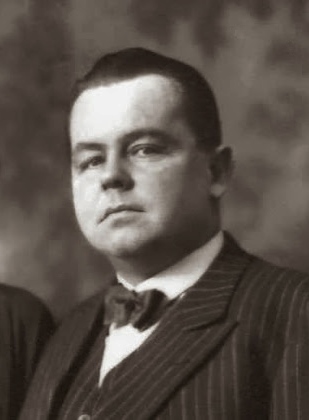
Adolph Schwarzenberg was a notable landowner, entrepreneur and philanthropist. He was the eldest son of Johann and Therese Schwarzenberg, née Trauttmansdorff-Weinsberg. An outspoken opponent of the Nazi regime, his properties were seized by the German Reich and by Third Czechoslovak Republic shortly before the Communist coup of 1948.

Norman L. Eisen is an American attorney, author, and former diplomat. He is a senior fellow in governance studies at the Brookings Institution, a CNN legal analyst, and the co-founder and executive chair of the States United Democracy Center. He was co-counsel for the House Judiciary Committee during the first impeachment and trial of President Donald Trump in 2020. He served as White House Special Counsel for Ethics and Government Reform, United States Ambassador to the Czech Republic, and board chair of Citizens for Responsibility and Ethics in Washington (CREW). He is the author of four books, including The Last Palace: Europe's Turbulent Century in Five Lives and One Legendary House (2018). In 2022, he co-authored Overcoming Trumpery: How to Restore Ethics, the Rule of Law, and Democracy.
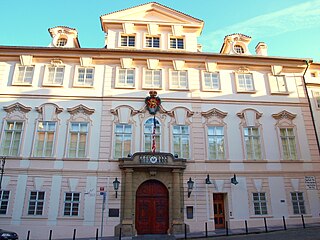
The Schönborn Palace in the Malá Strana district of Prague is the current home of the United States Embassy to the Czech Republic. The first United States Minister to Czechoslovakia was Richard Crane, the grandson of a Chicago plumbing millionaire. Crane, who had acquired the palace at the end of the First World War, sold the building in 1925 to the United States Government for $117,000.
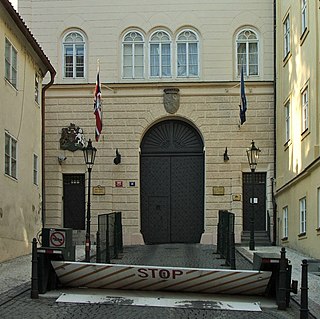
The British Embassy in Prague is the chief diplomatic mission of the United Kingdom in the Czech Republic. It is located in the Thun Palace, a historic building in the heart of the Malá Strana. The incumbent ambassador is Matt Field.
Julius Petschek was an industrialist of Jewish origin in former Czechoslovakia. Together with his brother Ignaz, he was one of the wealthiest persons of interwar Czechoslovakia.
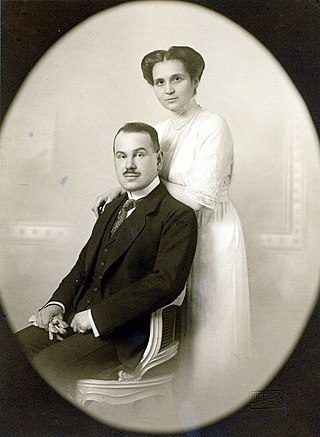
Otto Petschek was a European industrialist known for building the Petschek Villa in Prague.

Relations between Czechoslovakia and the United States refer to two periods in Czechoslovakia's history. The first being the establishment of Czechoslovakia after its declaration of independence in 1918 from Austria-Hungary initiated by President Woodrow Wilson as part of his Fourteen Points following World War I. The second period being the communist era from 1948 when relations were strained, until 1992 when Czechoslovakia split forming the independent nations of the Czech Republic and Slovakia as a result of the 1989 Velvet Revolution.

Náměstí Borise Němcova is a square in Prague 6, Bubeneč, which houses the Embassy of the Russian Federation in the Czech republic.

The Anglo-Czechoslovak and Prague Credit Bank, also known as Anglobanka, was the second-largest bank in Czechoslovakia during the 1930s. It resulted from the merger in 1930 of three Prague-based banks:





















